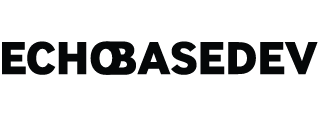Open vs. Closed Source LLMs: Finding Your Path
Large language models (LLMs) have exploded onto the tech scene, reshaping AI and machine learning as we know it. As companies race to develop more powerful models, a key question emerges: should you go with open source or closed source LLMs?
What Are LLMs, Anyway?
LLMs are essentially deep neural networks trained to understand and generate human language. They power everything from chatbots to content creation tools by analyzing massive text datasets.
The distinction between open and closed source can get fuzzy, as companies sometimes release older versions while keeping cutting-edge models private. But generally:
- Open Source LLMs make their code and pre-trained models freely available for anyone to use and modify. Think Meta’s Llama or models in Hugging Face’s Transformers library.
- Closed Source LLMs keep their code proprietary, like Google’s Gemini or OpenAI’s GPT-4.
The Open Source Advantage
The open source movement has brought its collaborative spirit to LLM development. Organizations like EleutherAI and Hugging Face, along with academic institutions, have pushed innovation forward by making powerful models accessible to all.
Why open source shines:
- Anyone can access and experiment with these models
- Diverse contributors drive rapid innovation
- Transparency allows for better scrutiny of biases and vulnerabilities
The downsides:
- Less consistent support and maintenance
- May lag behind closed models in cutting-edge capabilities
- Some businesses worry about support and IP issues
Corporate Powerhouses
Closed source LLMs come from major tech players with deep pockets. Their substantial investments in R&D often put them at the forefront of capabilities and performance.
Why closed source works:
- Often leads in performance and cutting-edge features
- Professional support and maintenance
- Companies can protect their intellectual property
The challenges:
- High costs limit access for researchers and smaller organizations
- Less transparency raises questions about biases and security
- Innovation may be confined within corporate walls
Finding Middle Ground
Many organizations are embracing hybrid approaches. OpenAI initially offered public access to earlier GPT versions before becoming more closed, while Google occasionally collaborates with open source communities.
As the AI landscape evolves, we need to address regulatory concerns, emphasize transparency, and prepare for technological shifts that will shape the future of LLMs.
Our Approach at ECHOBASEDEV
At echobasedev, we’ve found value in both worlds. Our hybrid strategy allows us to leverage open source models for our music recommendation tool ‘Groovinate’ while using closed source solutions for our fintech projects.
This balanced approach lets us tap into community-driven innovation while also accessing cutting-edge performance when needed. It reflects our commitment to collaboration, exceptional results, and ethical AI development.
Whether you’re just starting with LLMs or looking to integrate them into your business, you don’t have to navigate this complex landscape alone. Our team stays on the cutting edge of AI innovation, ready to help you make informed decisions in this rapidly evolving field.
Let’s build the future of AI together – one that’s innovative, responsible, and accessible to all.

